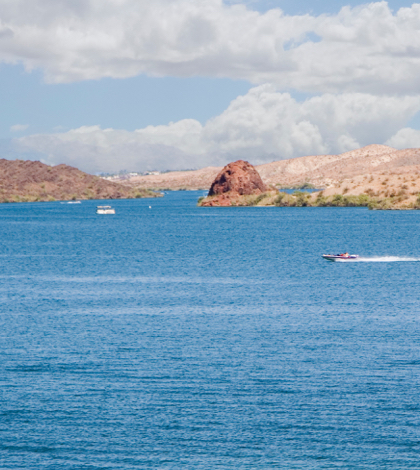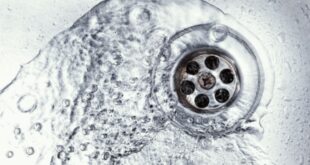If you’ve ever spent any time at Lake Havasu along the California-Arizona border you’ve likely seen Parker Dam, the site where the Colorado River’s waters are initially drawn into what is known as the Colorado River Aqueduct (CRA).
Originally conceived by William Mulholland, it was the largest public works project in Southern California during the Great Depression. The 242-mile long aqueduct was built in 1920s when Los Angeles had grown so rapidly that the existing water supplies could no longer fulfill the region’s domestic and agricultural water needs.
Comprised of two reservoirs, five pumping stations, 63 miles of canals, 92 miles of tunnels, and 84 miles of buried conduit and siphons. The CRA stretches from Parker Dam at the eastern-most point to Lake Mathews at its most western point in Riverside County. Average annual throughput is 1,200,000 acre-feet. The water is pumped up several times on its journey to Southern California, the first time being in the Whipple Mountains. The second lift is at Iron Mountain followed by two lifts in the Eagle Mountains. The aqueduct then runs through the Coachella Valley, and San Gorgonio Pass. At Cabazon the aqueduct plunges underground entering the San Jacinto Tunnel at the base of the nearby San Jacinto Mountains until it reaches Lake Mathews on the east side of the Santa Ana Mountains. From there eight additional, smaller tunnels deliver the CRA water to various cities in the Los Angeles basin.
In the 1920s, as Los Angeles was burgeoning with new residents, The Metropolitan Water District was incorporated in the later years of the decade and began planning for the CRA. Eight different routes were considered for the aqueduct. Choosing the Parker Dam option was perceived as the safest and most economical.
Water from the CRA began flowing into Los Angeles in the late spring of 1941. This was fortuitous with the United States entering WWII on Dec. 7 of 1941; finding skilled laborers for the CRA’s completion may have been difficult after the war broke out.
But the construction of the CRA was plagued by many problems throughout construction. Some 25 men died during just the construction of the Coachella Valley portion of the aqueduct. Most deaths were attributable to falls, heat and crushings of various causes.
As the CRA was constructed in stages camps were set up to meet the most basic needs of the laborers. Crude housing for sleeping quarters and meals were constructed as needed. Whereas the camps had emergency first aid stations only the camp at Berdoo Canyon was lucky enough to have a 27-bed hospital.
Perhaps as a nod to an early form of a health maintenance organization (HMO) – and according to the Desert Sun newspaper – each employee was charged five cents per working day for medical care against average daily wages of $4 to $5. The air-conditioned hospital was equipped with what was then a modern operating room, x-ray plant, diet kitchen and offices. It boasted a surgeon/medical officer, assistant surgeon and 14 registered male nurses.
In order to construct the CRA a $220 million bond was approved on September 29, 1931. When the aqueduct was completed Los Angeles area residents and business complained the water was too expensive. Expansion of the service area and subsidies from property taxes eventually reduced prices and expanded demand. Not until 1954 did revenue from selling water exceed the cost of delivering it.
The history of the Colorado River Aqueduct is rich and tells part of the story of how the arid Southern California basin become lush and a haven for tourists to visit and residents to relish. As the CRA celebrates its 75 years realize how dependent we are on this fountain of water and redouble your efforts to conserve and protect this vital natural resource.
 California Water News Daily Your Source For Water News in California
California Water News Daily Your Source For Water News in California


